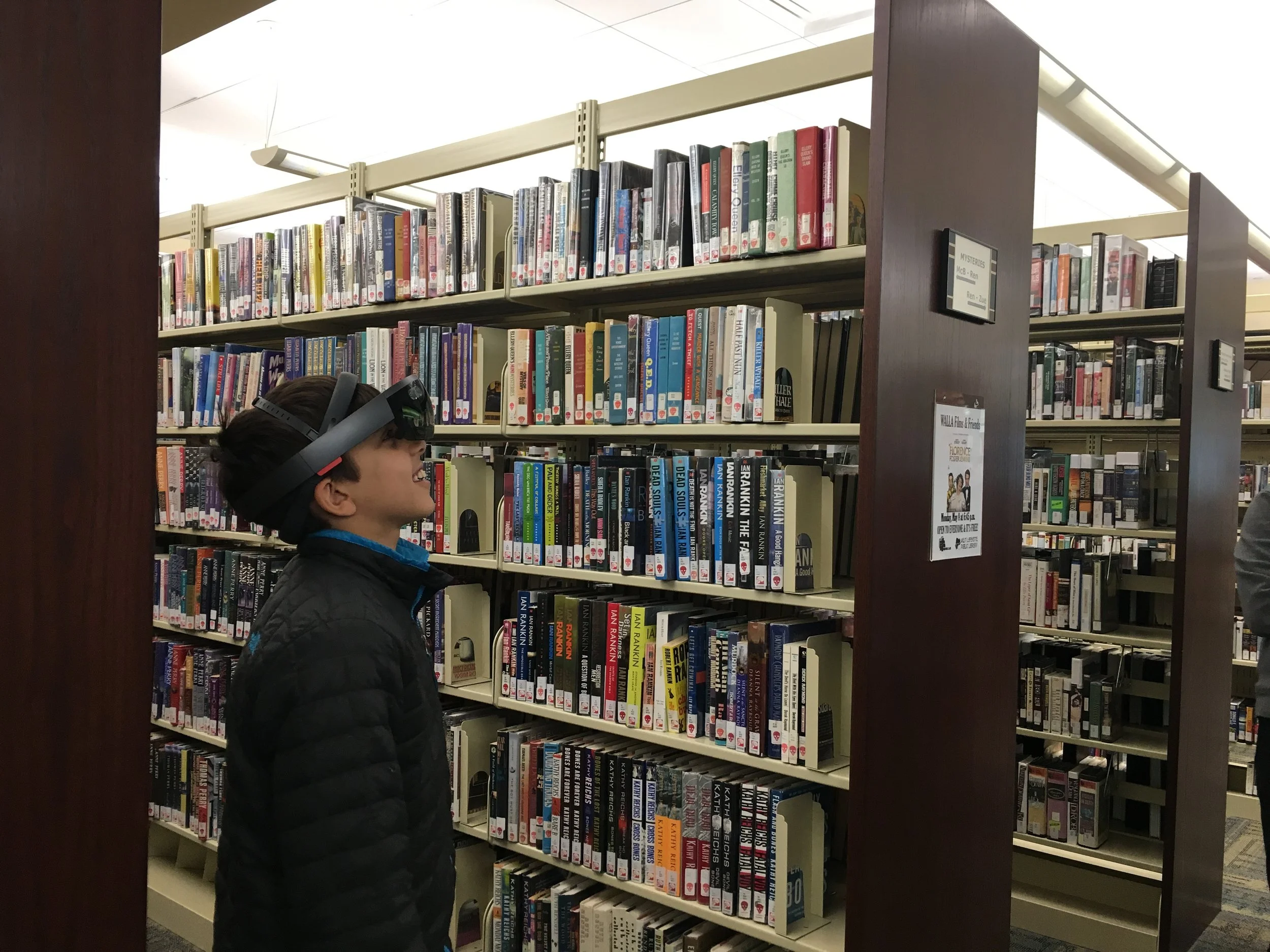Microsoft HoloLens
The HoloLens is a head-mounted device, designed and manufactured by Microsoft, with lenses to project an augmented reality (AR) experience. HoloLens allows users to experience 3D holographic images as though they are a part of their environment, meaning the HoloLens is a Mixed Reality device. This level of immersion enables new forms of interactions in which the user’s desktop could be the living room.
Quick Rundown
What I Did
Conversed and engaged with children (ages 8-12)
Conducted usability testing with children
Contributed to the ideation process based on findings
Helped developed AR assets within Microsoft's HoloLens
Paper Wizard of Oz testing
HoloLens Development in Unity
What I Used
Adobe After Effects
Adobe Illustrator
Adobe Premier
Microsoft Visual Studio
Microsoft HoloLens
Unity
Overview
We chose to enhance the library experience, especially for children ages 8 -12. There's an identified decrease in children's interest to read books in school around fourth grade, which is commonly referred to as the "fourth-grade slump." Research shows that students can become burnt out, disinterested, unmotivated, confused, and stressed out. Students lose the thrill in reading as the academic structure switches from learning to read to reading to learn. They burn out due to the high volume of quizzes, tests, and competencies. If a student is experiencing the 'fourth-grade slump' and does not receive help, it has been shown that they will likely continue to fall behind academically. It could potentially lead to academic failure, resulting in dropping out of high school.
Initial Concept
Our initial concept was mapped out on a white board. It helped us to lay out what we wanted to do. At this point, our decisions was backed by scholarly research.
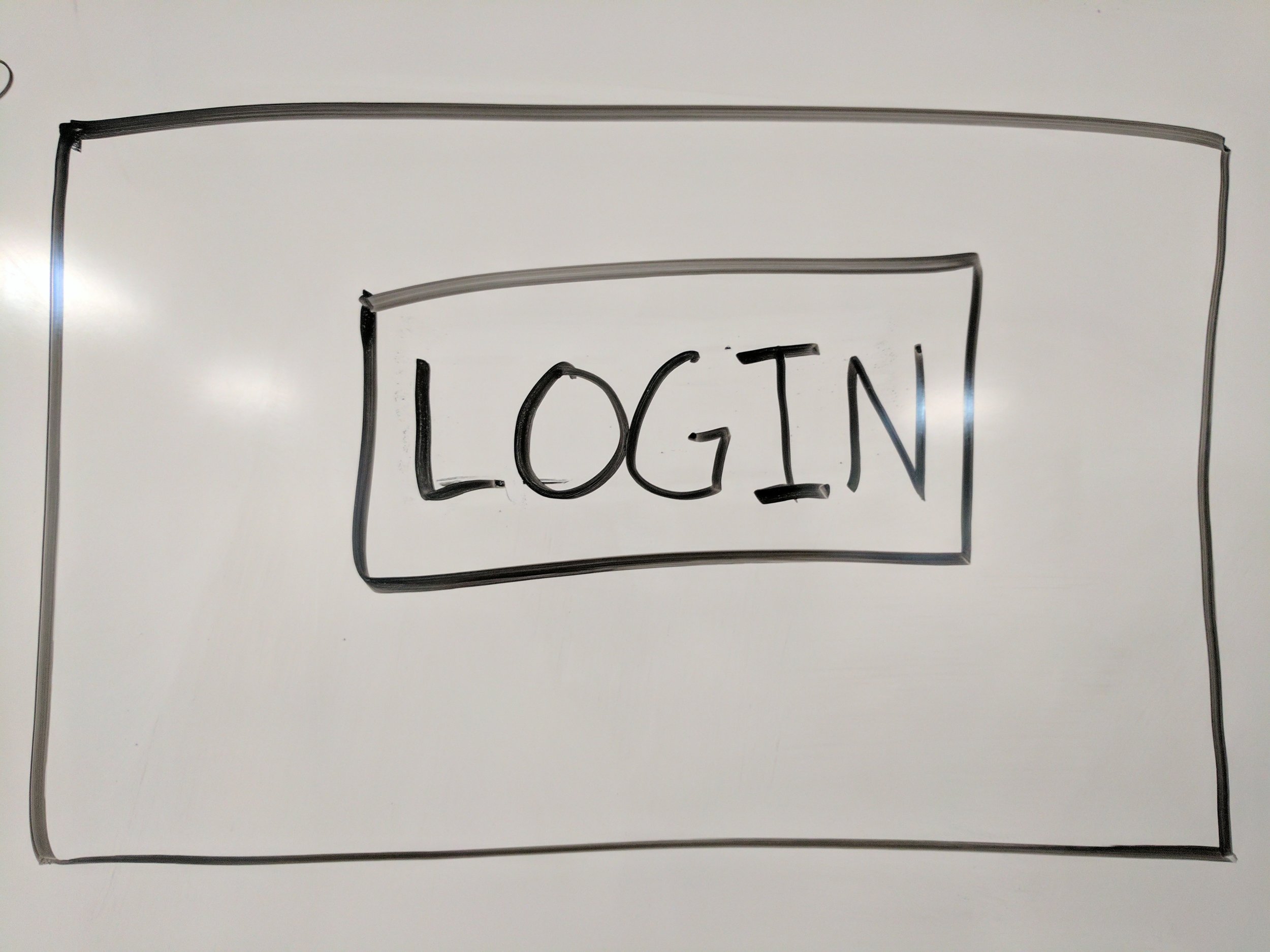
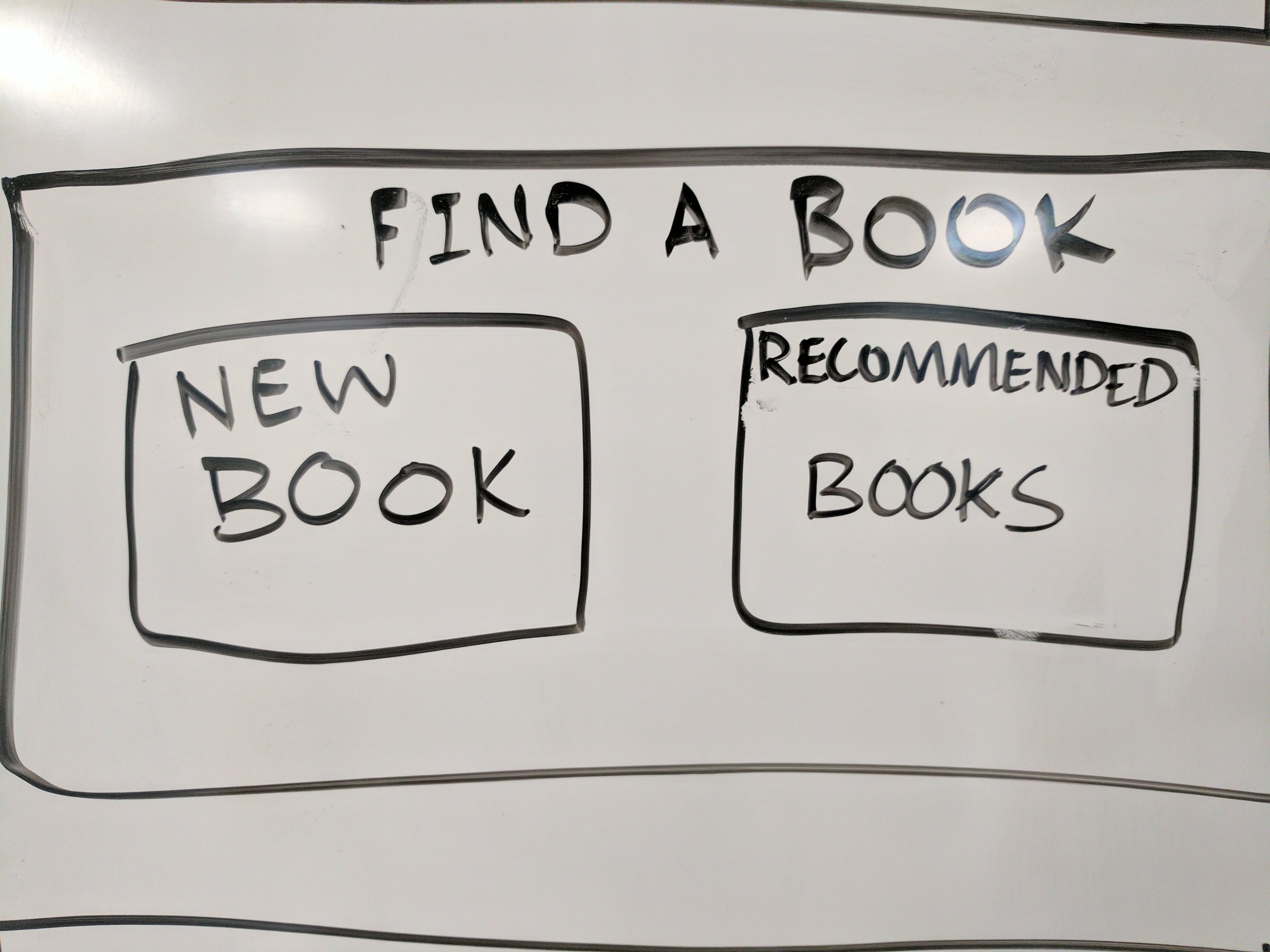
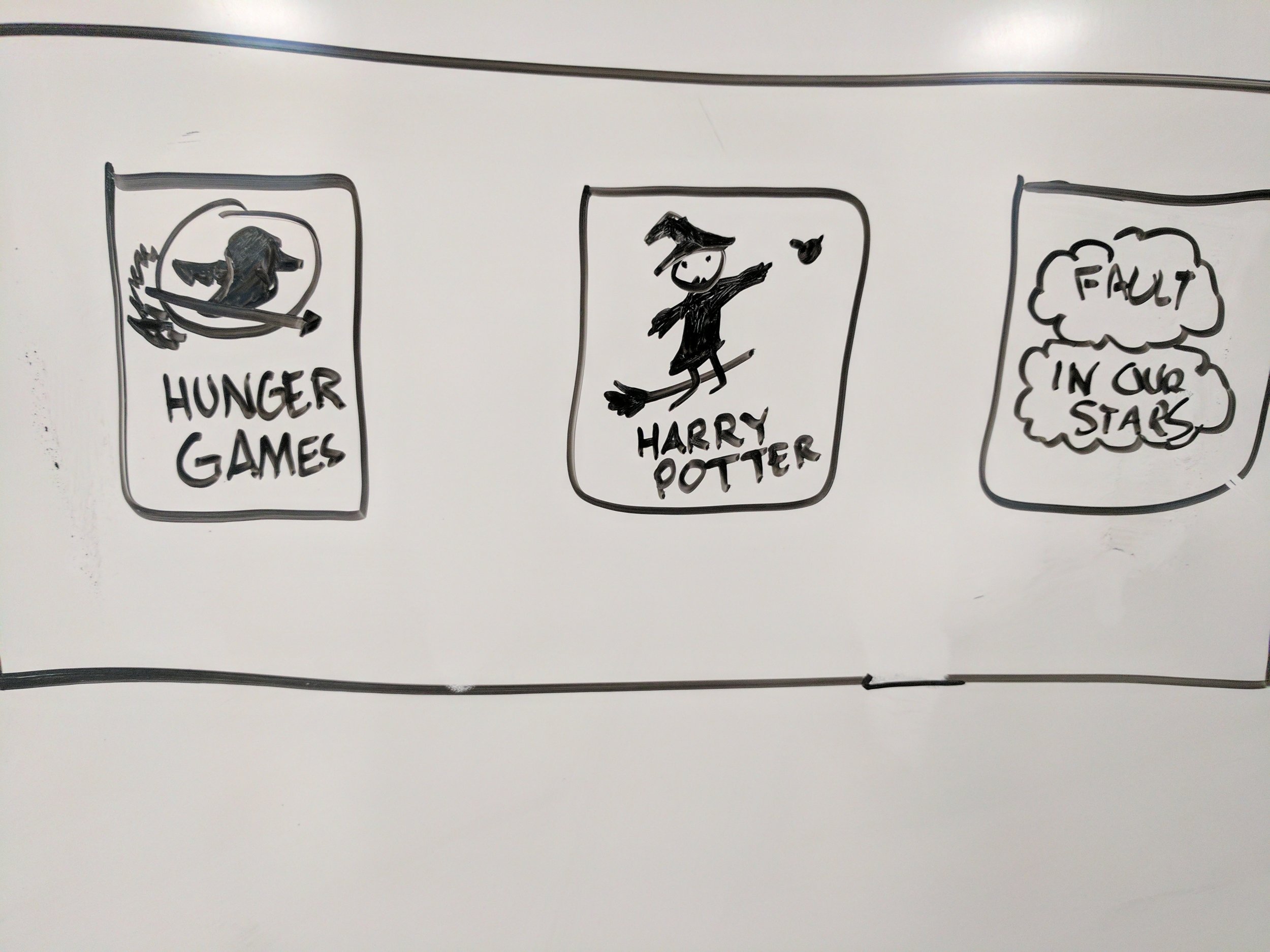
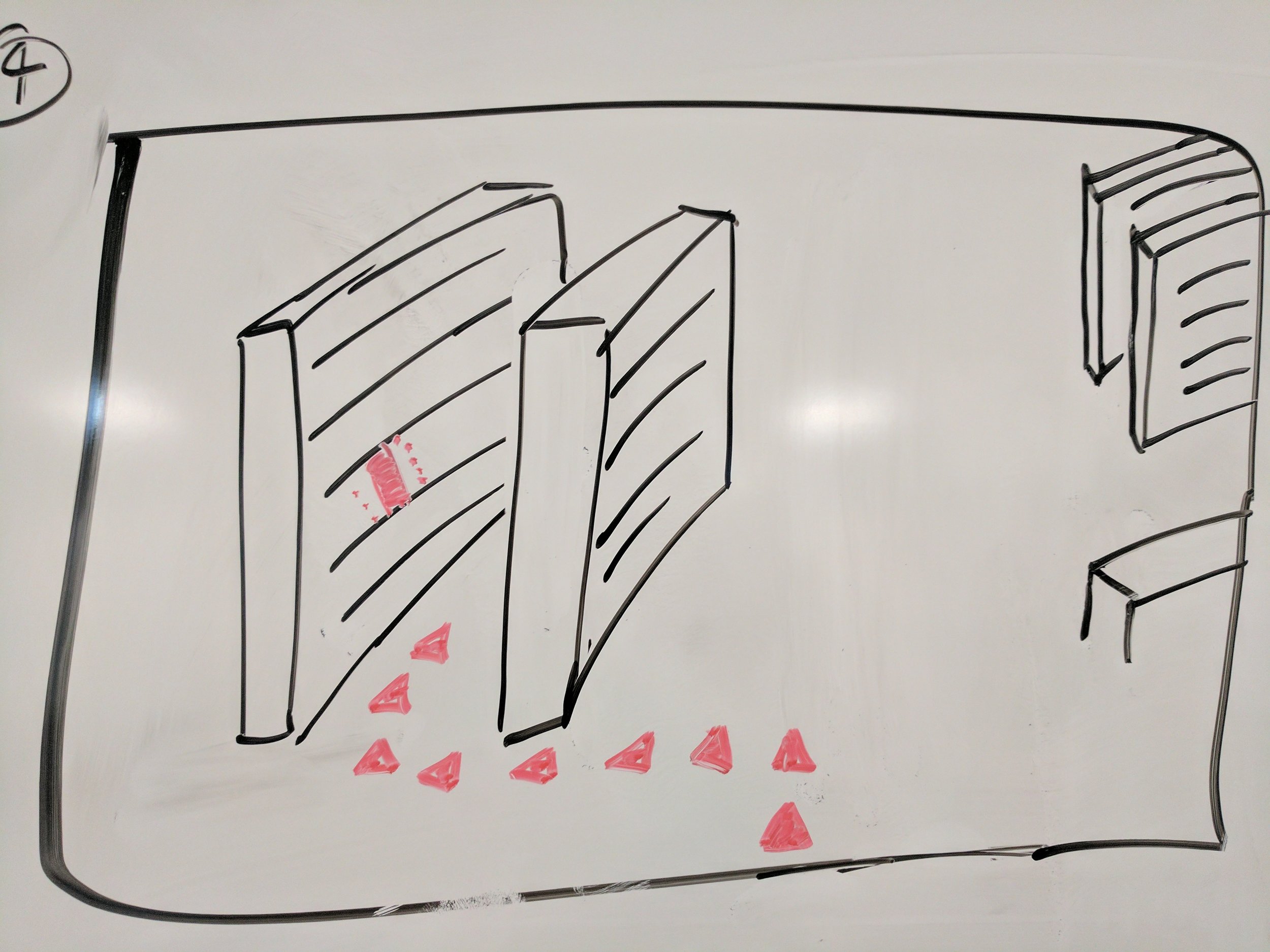
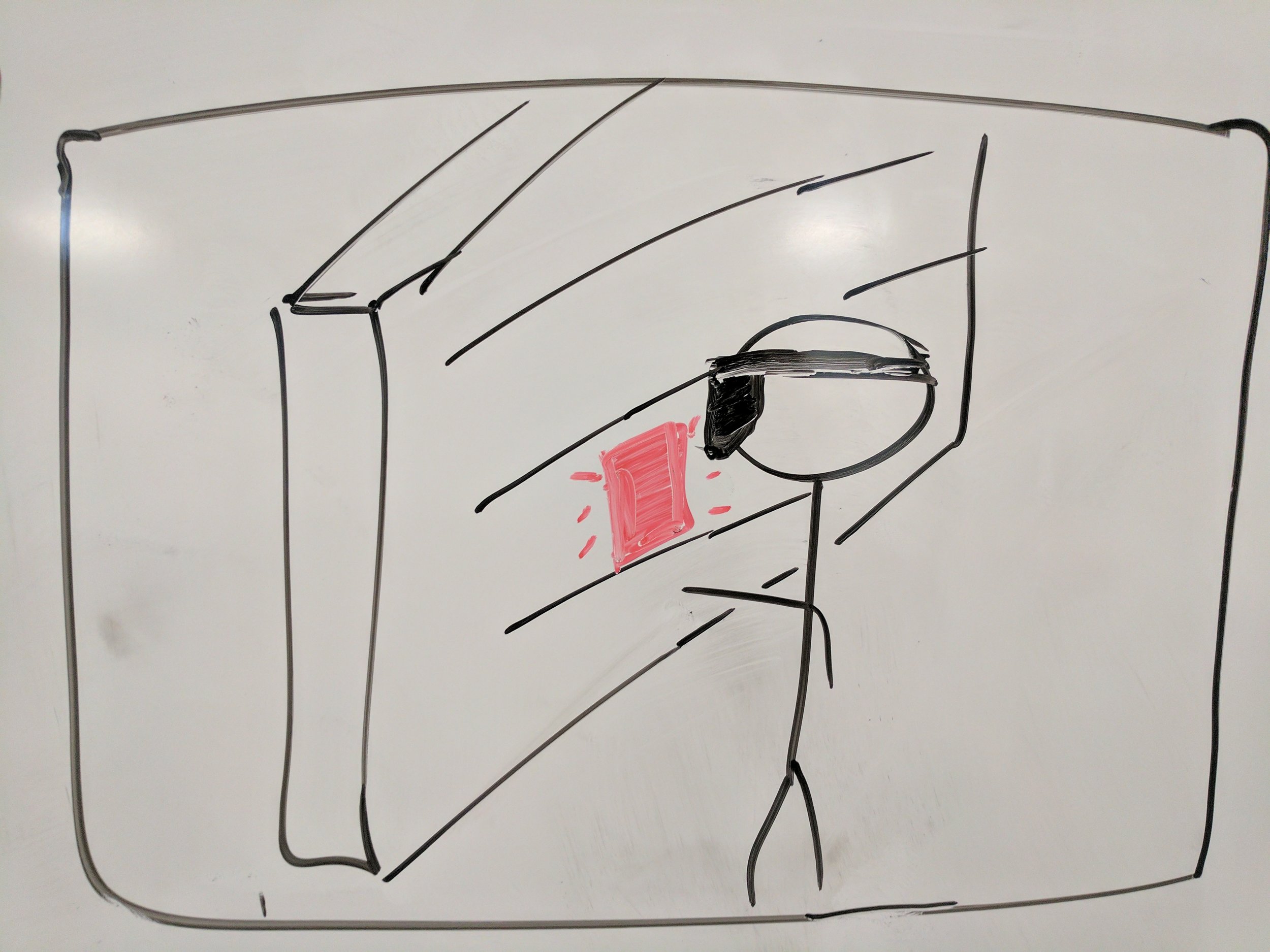
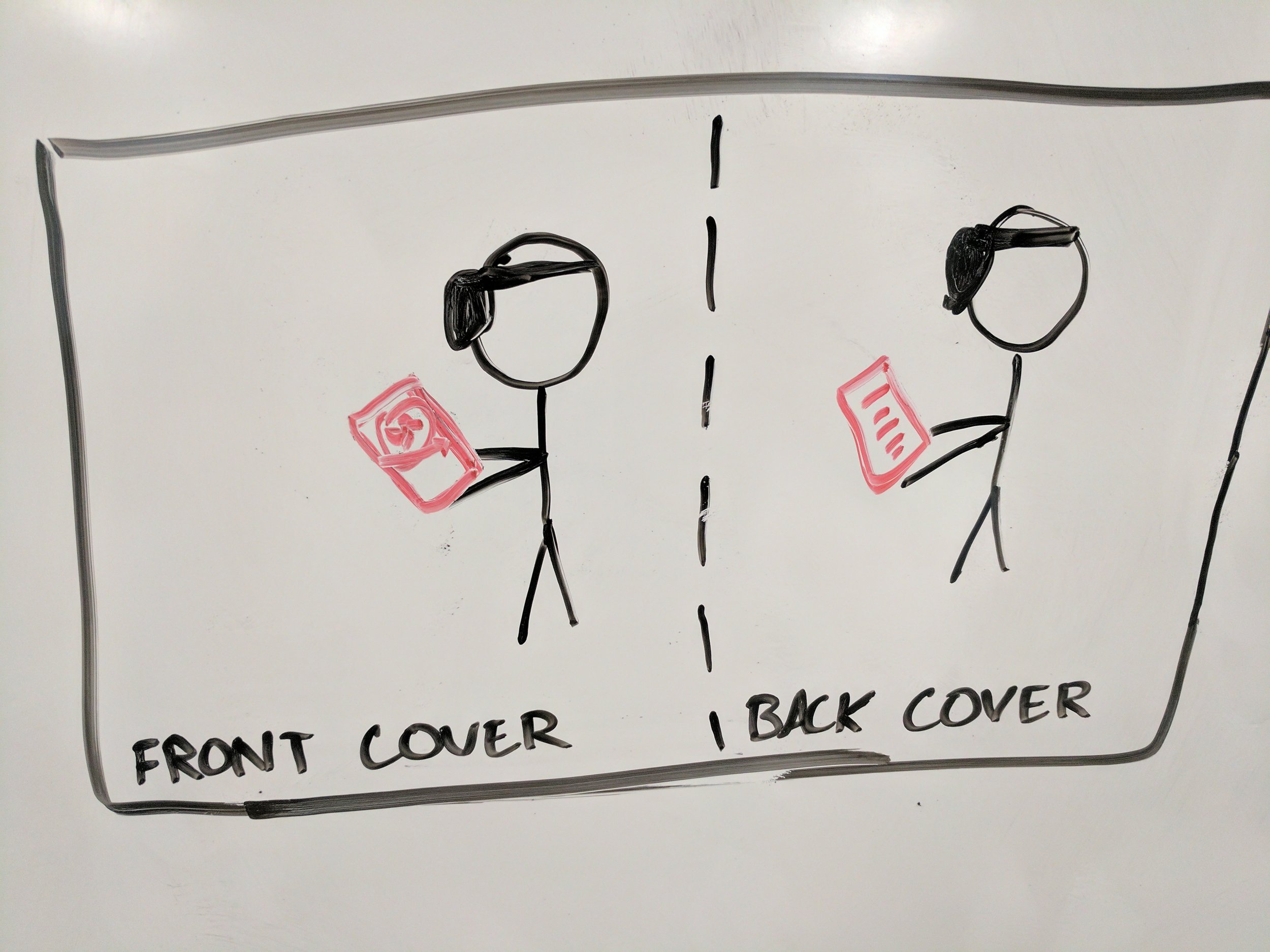
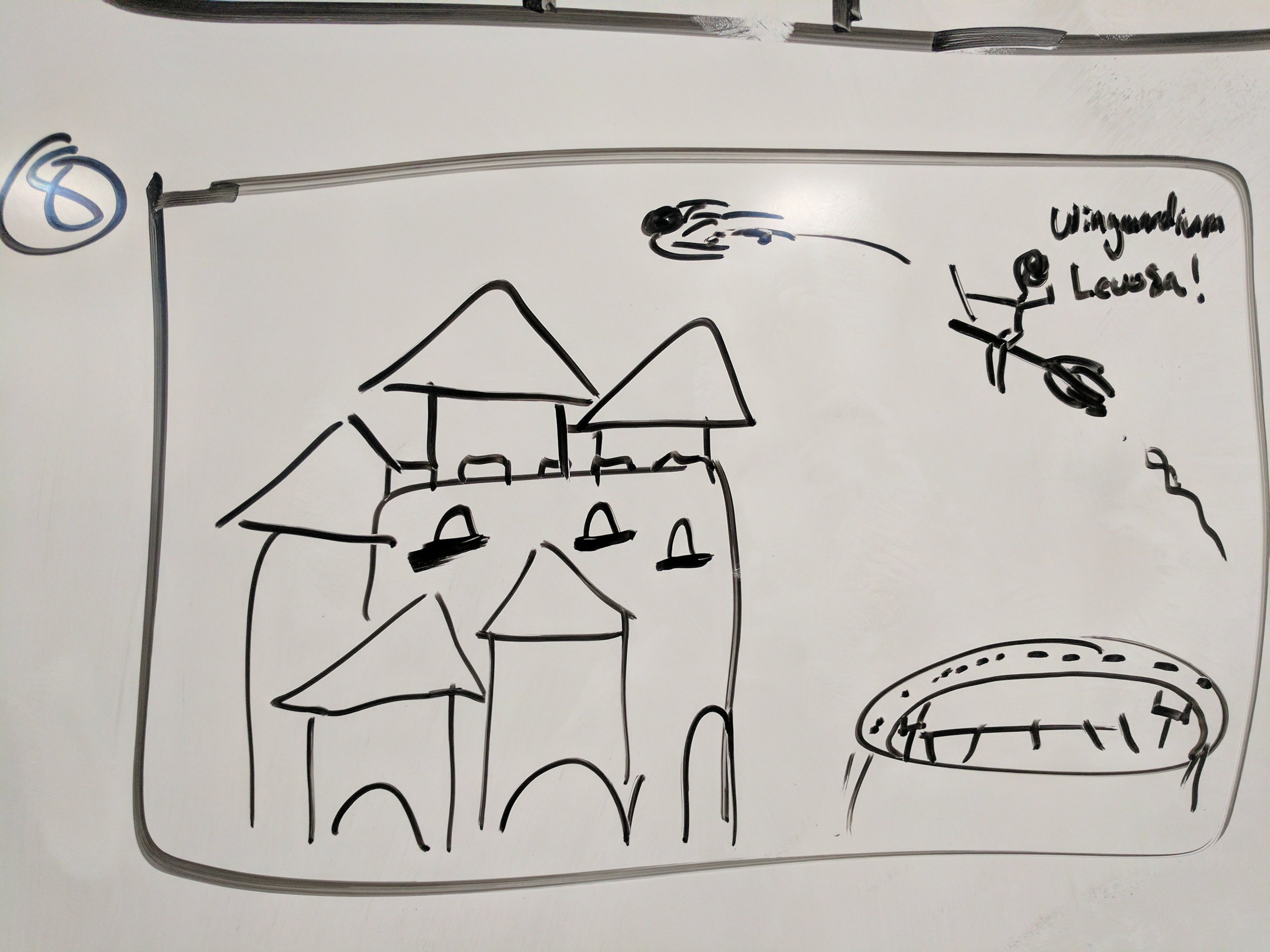
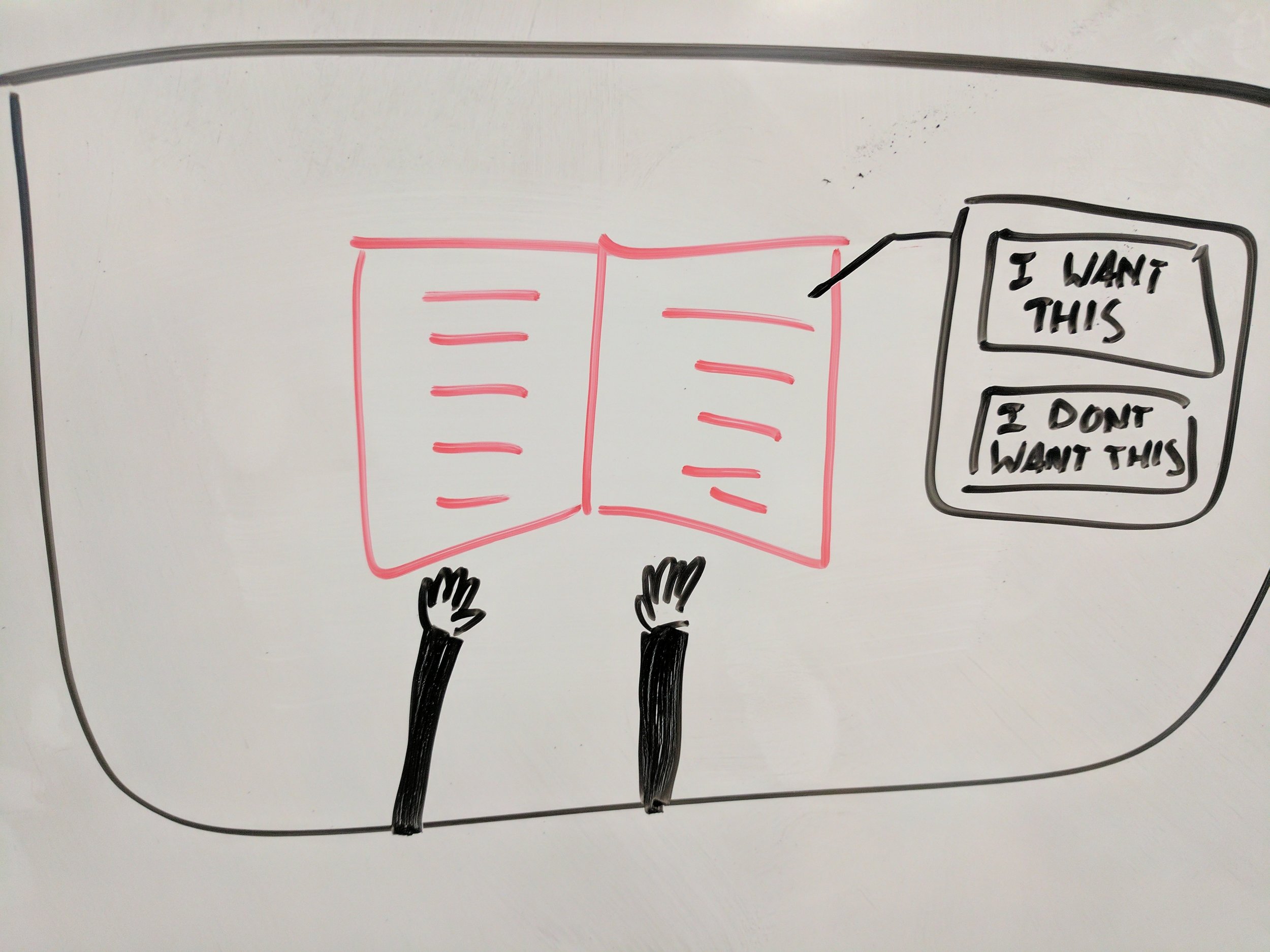
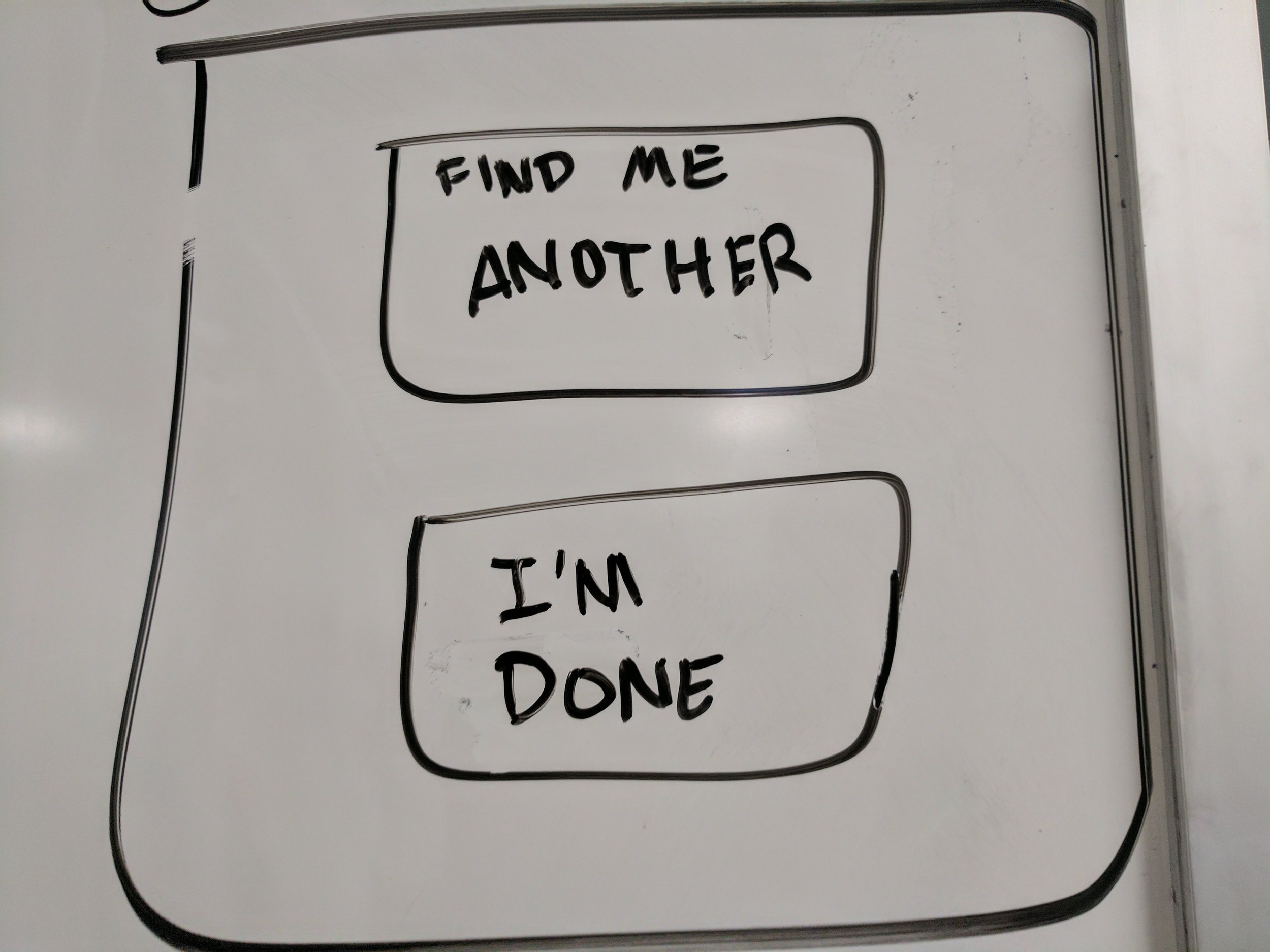
Observations
On a Saturday morning, we visited West Lafayette Public Library. Because our user group aired on the younger side, we went through the procedure of getting consent, by talking to the guardians, so that we could ask the little ones some questions and for them to play around with this cool gadget. While observing, talking, and explaining our project to these children, we were amazed with what we learned. Children utilize visual cues, previous books, librarians, and media to help them find books they are interested in. With this new information, we incorporated our findings into new sketches and our High Fidelity Mock-up.
Final Concept
Below is the storyboard for our final concept of our HoloLens application. The composite images were made using Adobe Photoshop, and the hand drawn elements were made by Si Qiu, one of the team members.
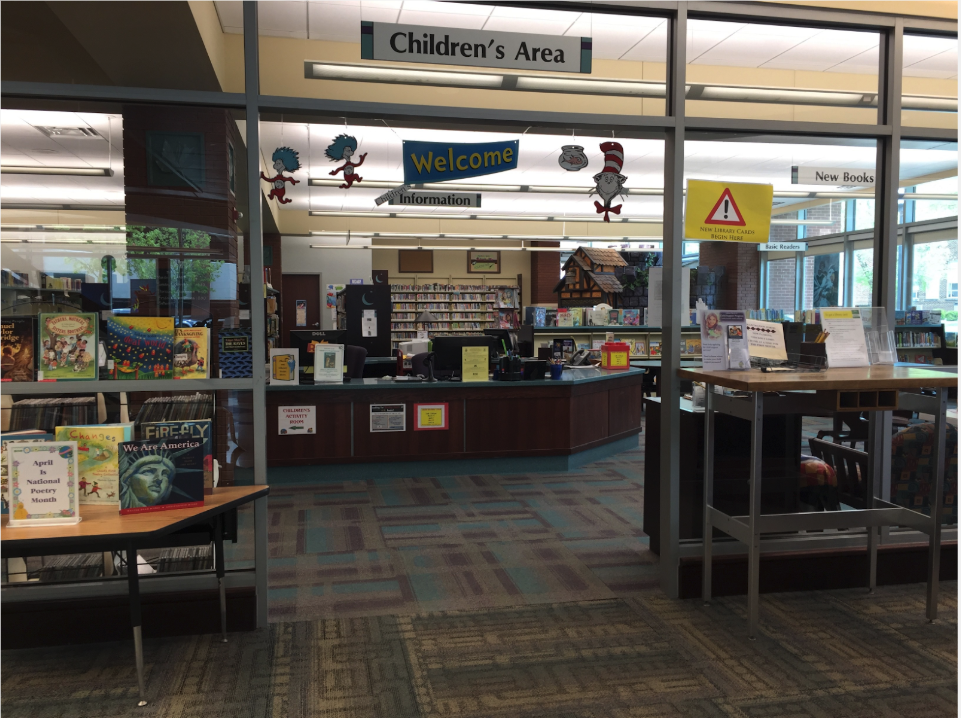
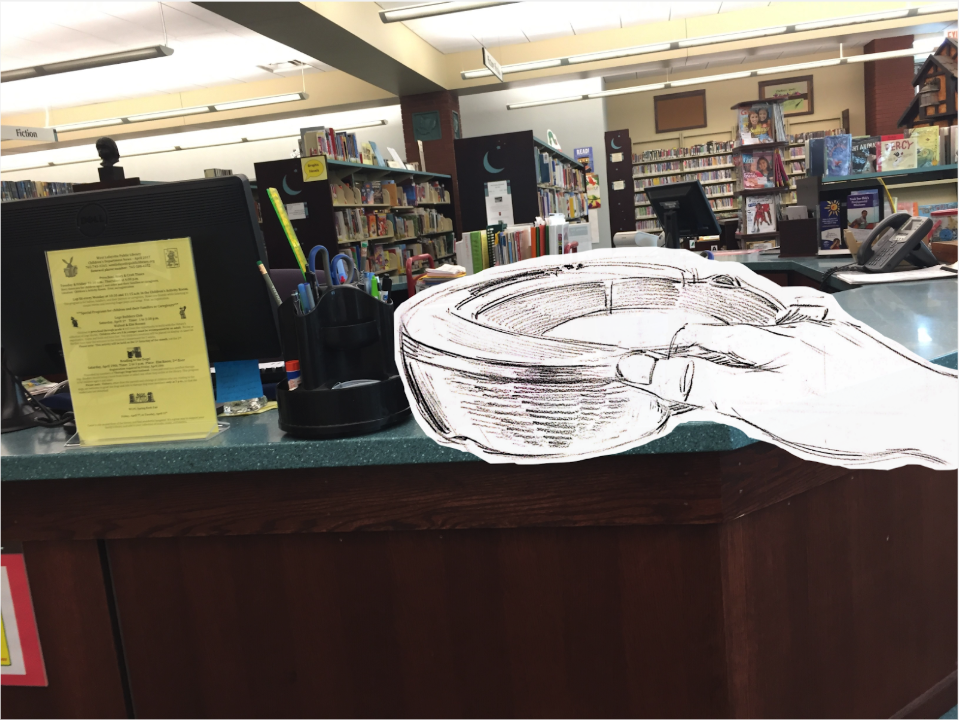

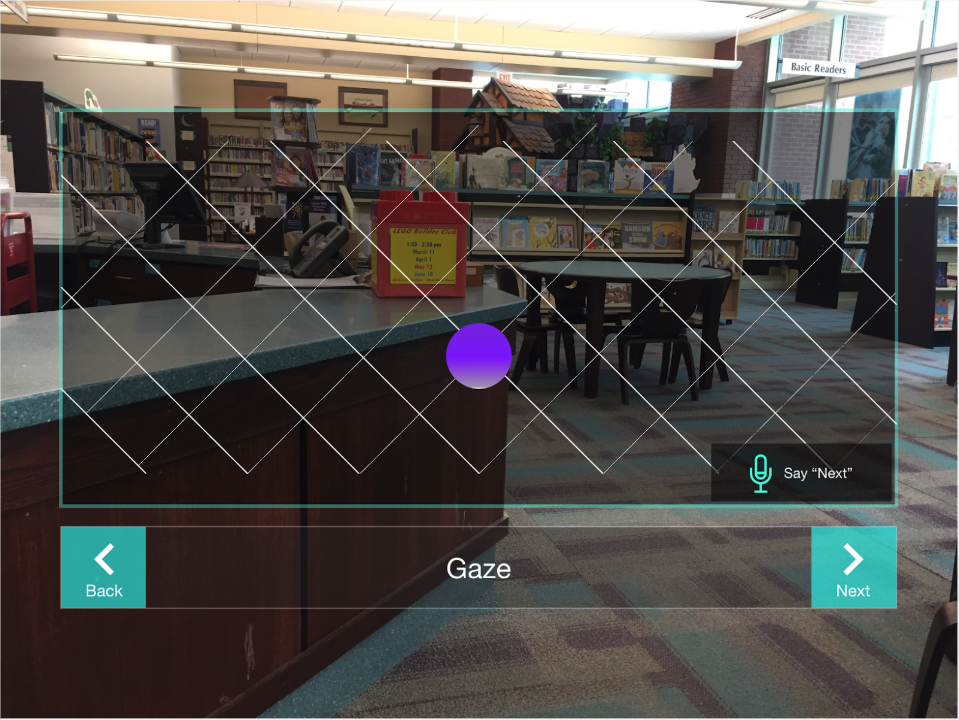
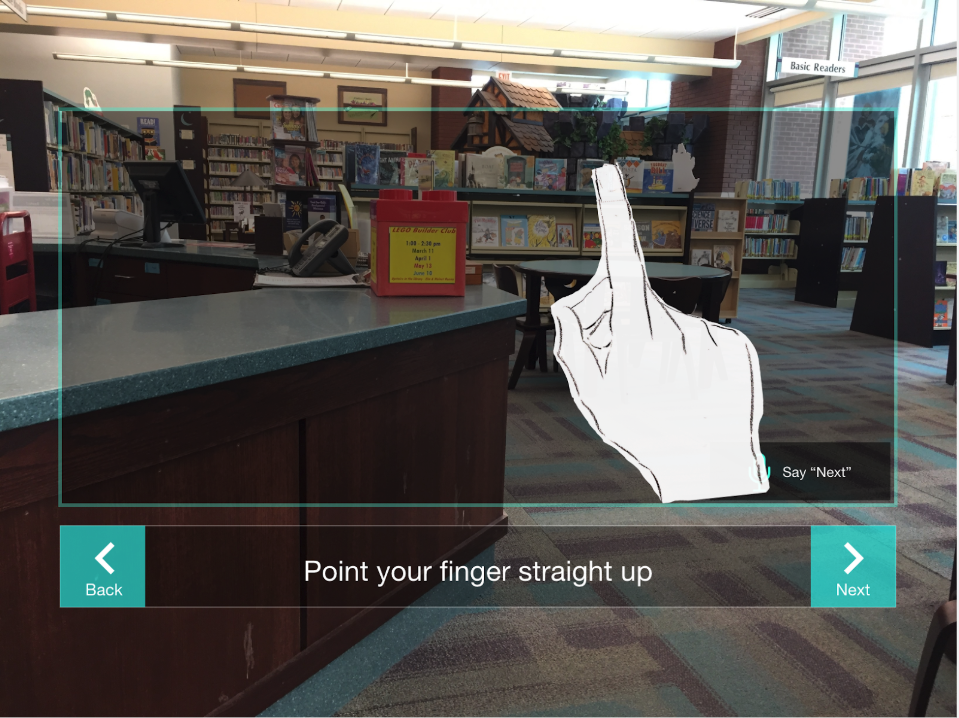
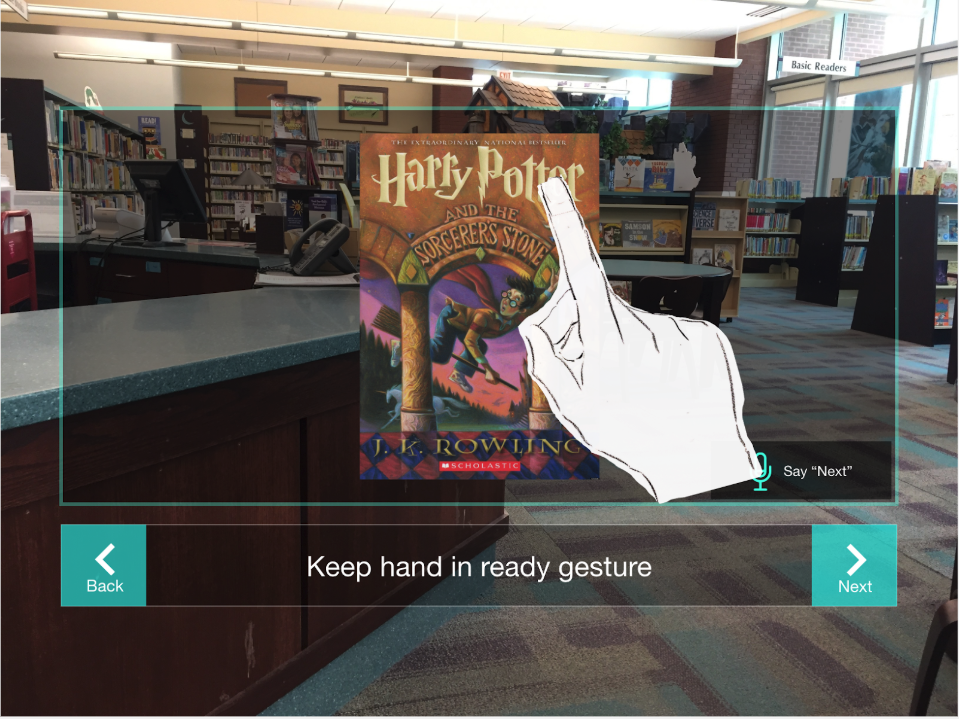
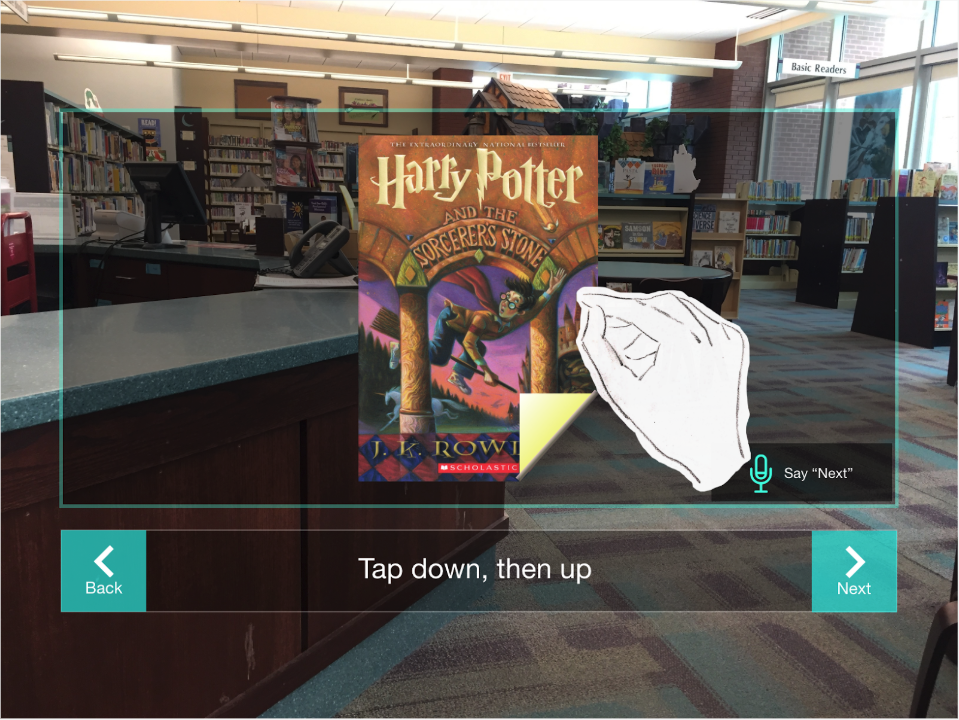
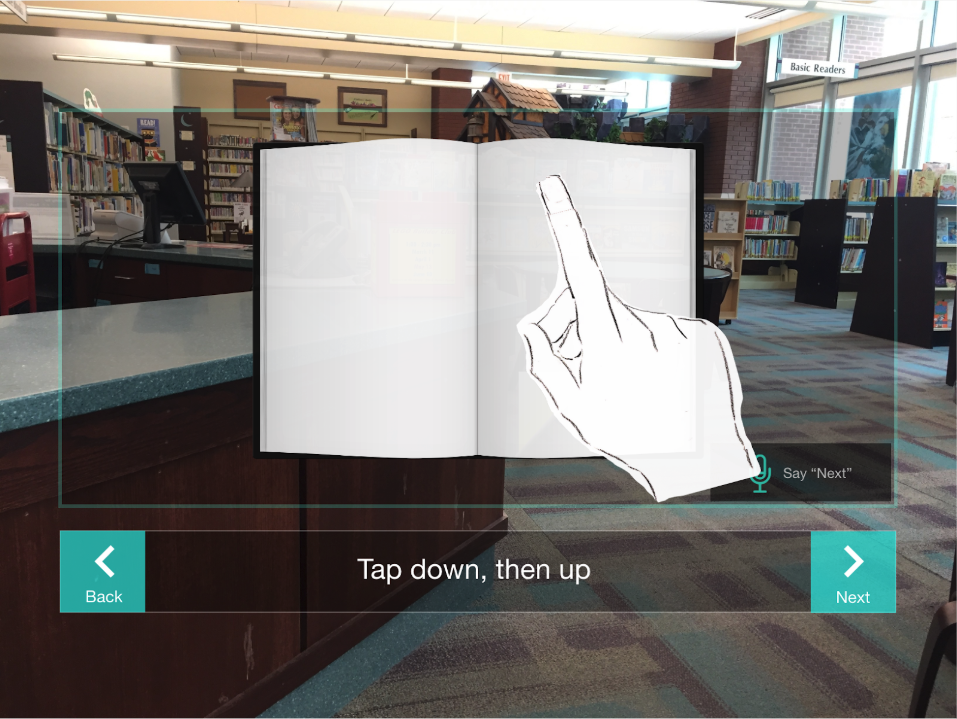
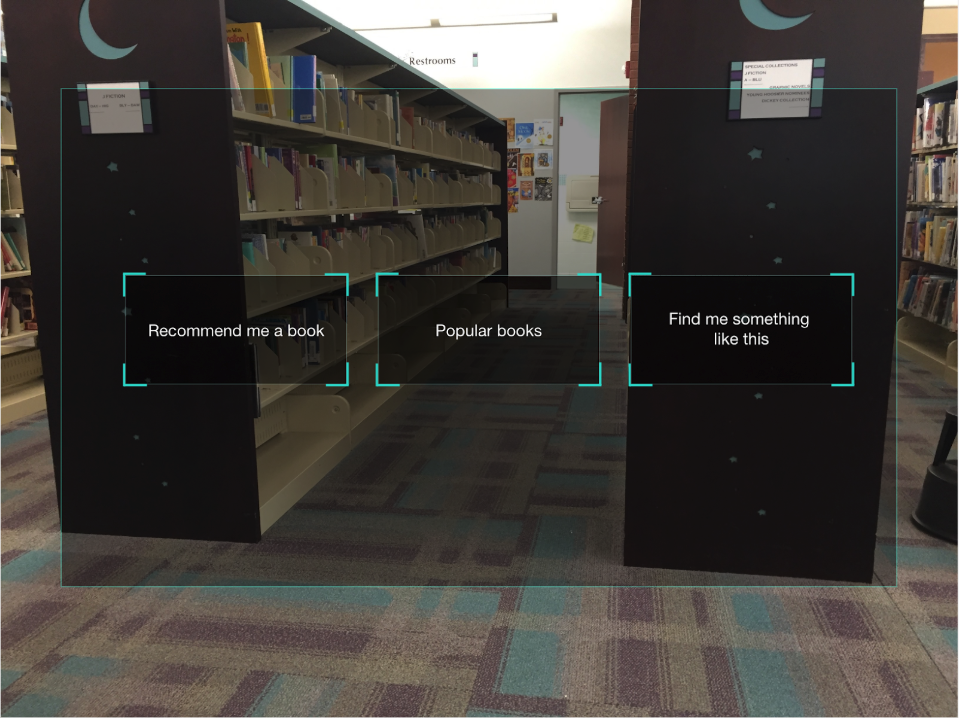
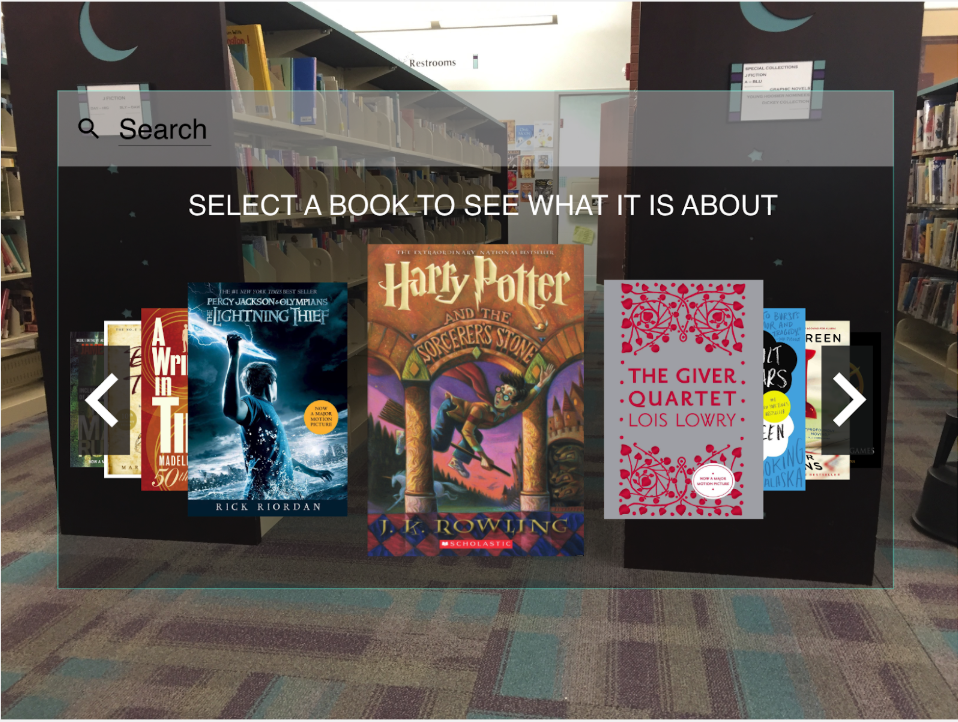
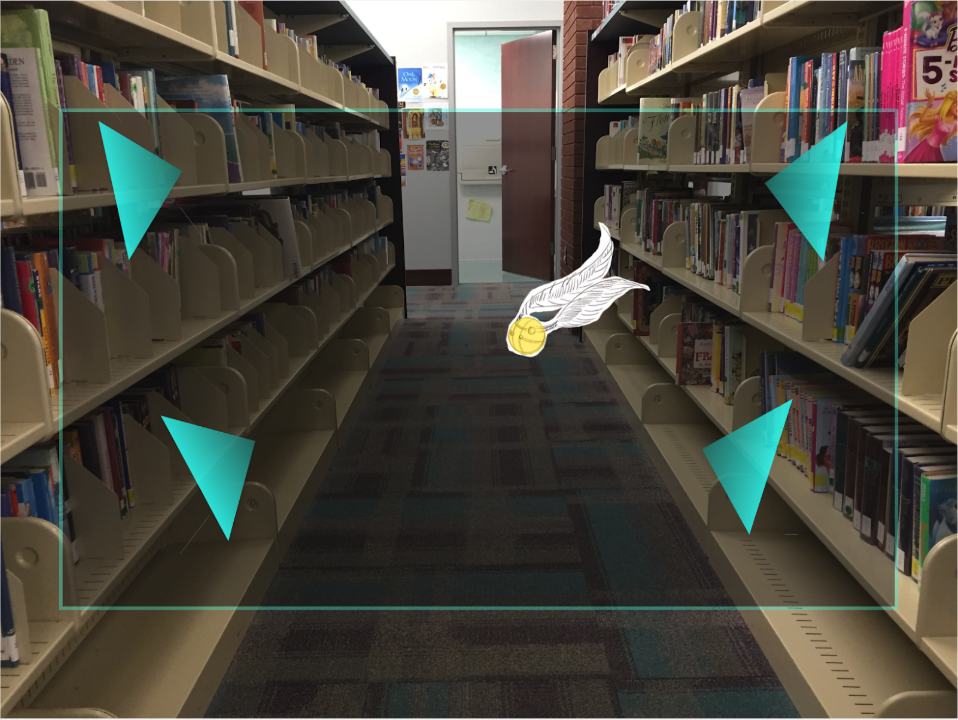
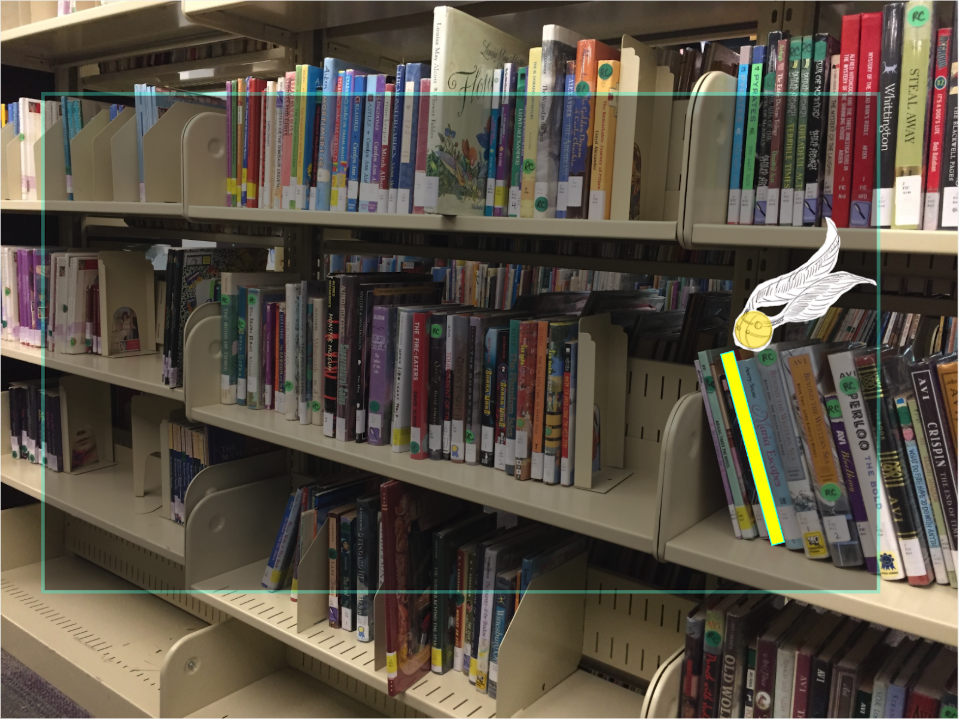
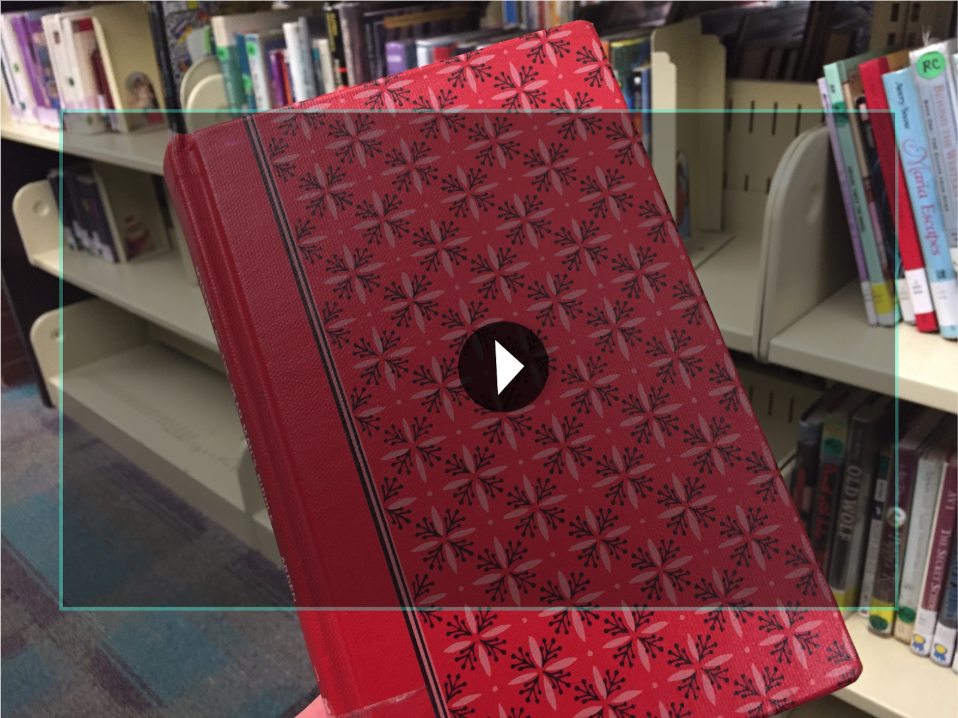
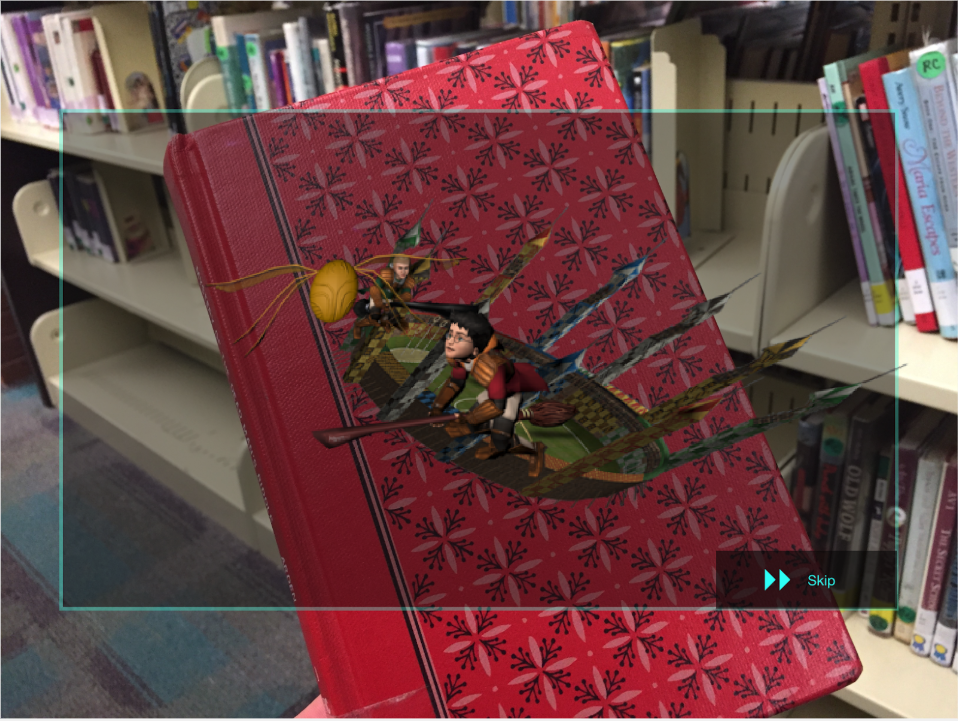
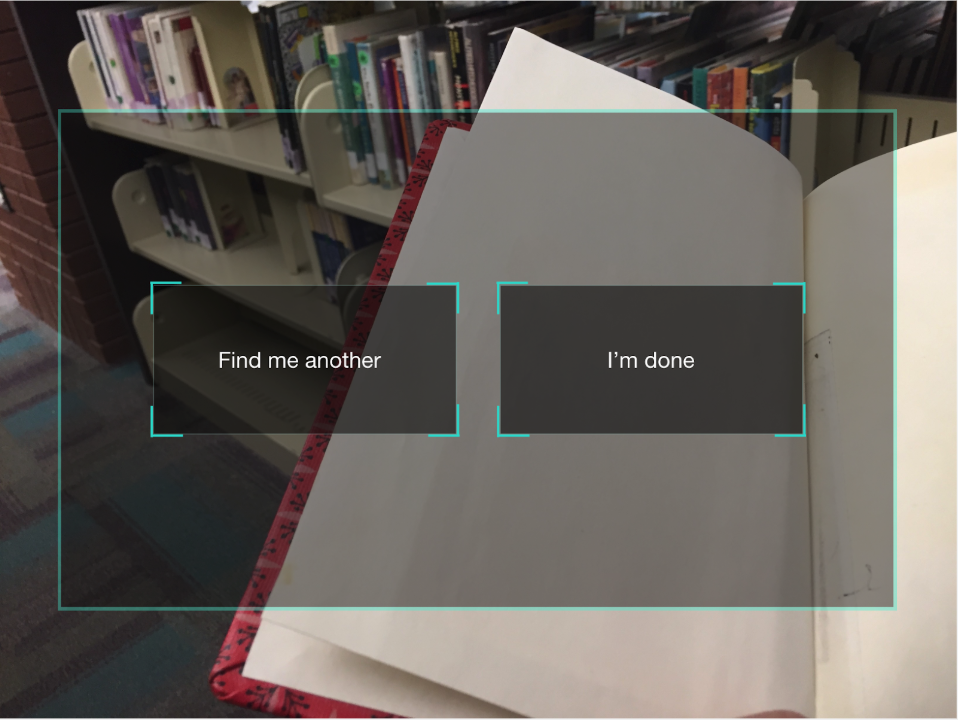
Some Noteworthy Things
Various research shows that students are more likely to read if they can pick out a book on their own.
Students are more likely to choose a book if there's no pressure for them to finish it, or expect there to be a test at the end.
Books are more appealing to students if it's been recommended by someone they trust, a peer, or if it's currently popular.
Those that independently chose their books and read are more likely to develop into life long learners, and this a potential way to bump the slump.
Wizard of Oz Testing
For our high fidelity mockup, we created a visual concept of what it might look like fully programmed in the Hololens. Due to time constraints, we had to utilize Wizard of Oz testing. Wizard of Oz testing is quick, effective, and all smoke and mirrors.
The Carousel UI we created for our High FIdelity Mock-Up
Our team conducts Wizard of Oz testing by holding up paper taped together to replicate the carousel.
We learned that our UI was intuitive to use, and children were able to easily understand how to interact with the HoloLens. They were thrilled and interested that something like this could be implemented in the future. They expressed that having something like this at their own library would be really cool, and they would come back just for it. Pretty incredible hearing that from children, our testing was definitely successful.
Summary
This project was an amazing experience and I got the to work with a team full of amazing individuals. As an undergrad, we've been handed an unique opportunity to create an experience with the HoloLens. The work we did for this project is truly inspiring for what can be done through augmented reality in the future. This was the first project where young children were the primary stakeholder, and getting to look into how children choose books was definitely interesting. Learning to actively converse and be engaged with children can be a challenge. The fact that these young children were able to quickly grasp and understand the capabilities of the Hololens reflects how fast the next generation is growing and learning. It pushes me to further my own understanding of technology and it's place in creating an experience.

